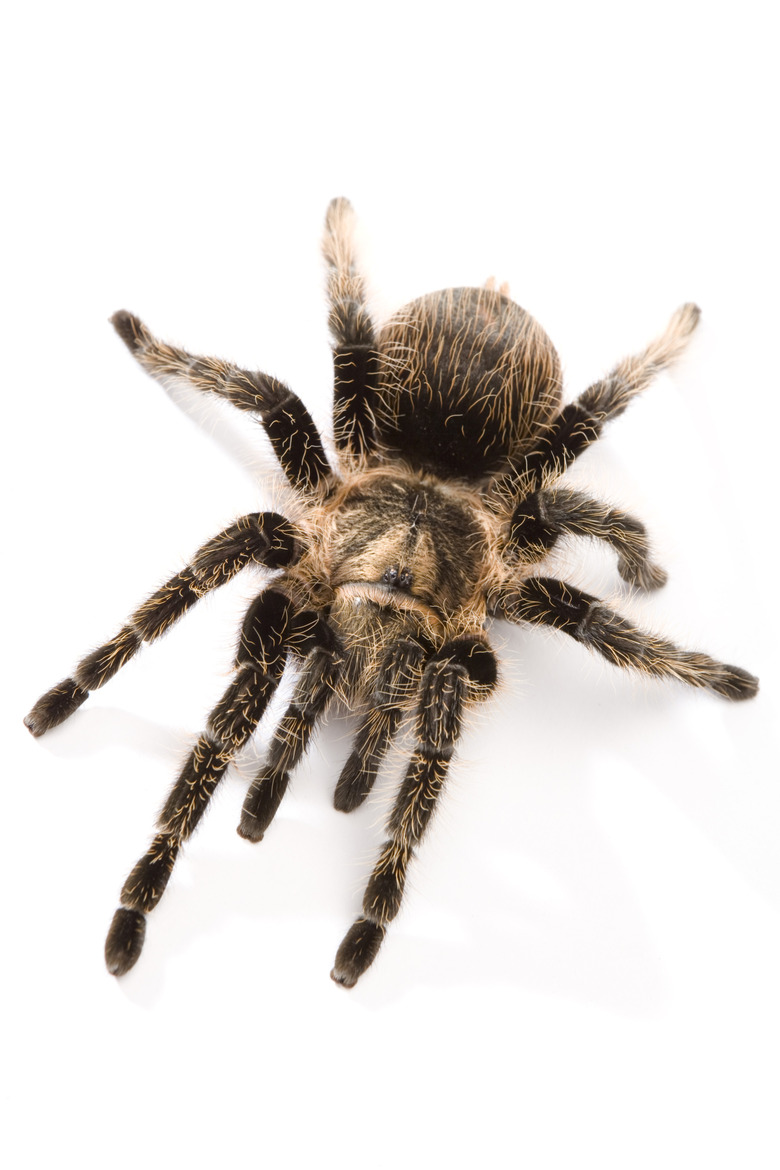Classification Of Spiders
Taxonomists classify all animals in the animal kingdom, from single cell animals to humans, into categories, called phylums. Each phylum is further subdivided into class, order, family, genus and species. Since the mid 1970s, spider classification underwent changes, especially in the genus and species categories, according to Jonathan Coddington, curator at the Smithonian National Museum of Natural History, Washington, D.C. Taxonomists use scientific names to classify all organisms, so that an organism can be identified all over the world in spite of local names and different languages.
Step 1
Spiders belong to the phylum Athropoda. All animals with an outer skeleton (exoskeleton), made of a horny substance, called chitin, are in this phylum. The animal in this phylum have segmented bodies and jointed legs and appendages. They also have at least three pairs of legs. Phylum Arthropoda includes insects, crabs, prawns, lobsters, millipedes and centipedes and spiders.
Class Arachnida
Step 1
The phylum Arthropoda is further subdivided into classes. Spiders belong to the class Arachnida. The members of this class are called arachnids. This class includes all arthropods that have four pairs of legs, but no antennae or wings. The body of the arthropod in this class is segmented or fused into one part. The class Arachnida includes spiders, scorpions, harvestmen, mites and ticks. Spiders differ from the other members in this class by having two distinct body parts, an abdomen and a front part, called the cephalothorax. The eyes and all legs are attached to the cephalothorax.
Step 2
- Spiders belong to the phylum Athropoda.
- The body of the arthropod in this class is segmented or fused into one part.
Order Araneae
Step 1
Classes are divided into orders. Spiders belong to the order Araneae. It is one of 11 orders in the class Arachnida. Spiders in this order differ from the animals in the other orders by how the abdomen is attached to the cephalothorax, the lack of segments in the abdomen, and by possessing a hind organ, the spinneret, for producing silk. In spiders, the connection between the abdomen and cephalothorax is very thin, while scorpions, harvestmen, and mites have a broad connection. Spiders with different characteristics are further subdivided into several suborders.
Families, Genus and Species
Step 1
The orders and suborders for spiders are further subdivided into about 110 families, 3,600 genera and 39,000 species, according to Jonathan Coddington. The classification of some spiders into these groups is still subject to change. Taxonomists have not yet identified all existing spiders and have placed some into inappropriate categories. These categories classify spiders by their lineages, anatomical characteristics and habits. The common house spider is an example of a well characterized spider; it belongs to the family Theridiidae and the genus and species Achaearanea tepidariorum.
Step 2
- Classes are divided into orders.
- Spiders in this order differ from the animals in the other orders by how the abdomen is attached to the cephalothorax, the lack of segments in the abdomen, and by possessing a hind organ, the spinneret, for producing silk.
